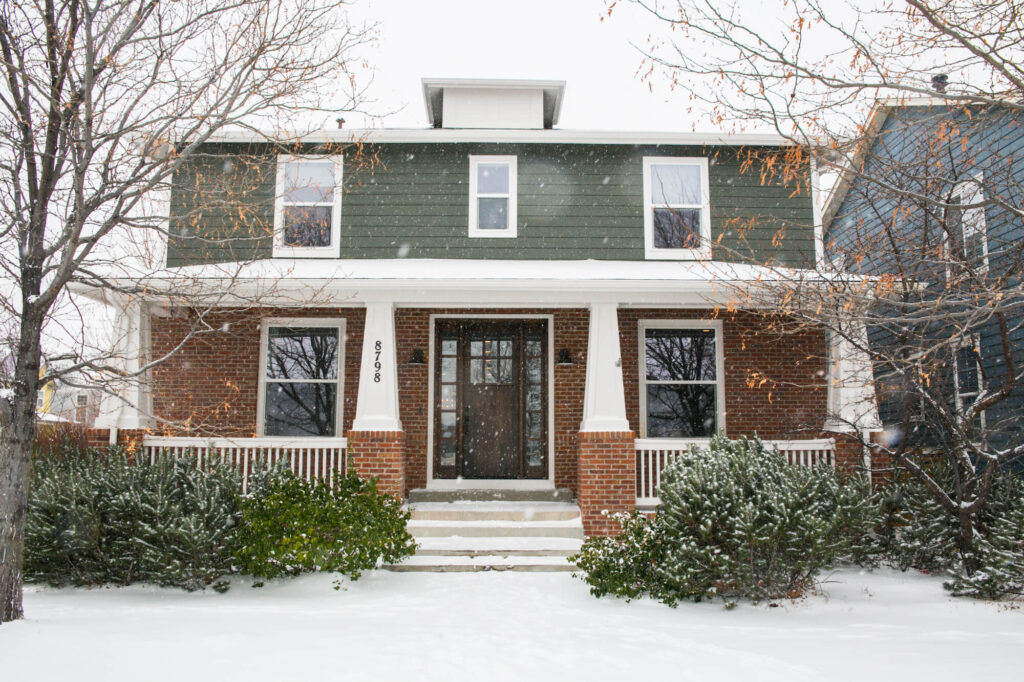Denver has more than 300 homes listed in the National Register of Historic Places. And thousands of other Denver homes are built in the classic styles including Victorian, Classical Revival, Queen Anne, Denver Squares, and more.
If you’re lucky enough to own one of Denver’s historic homes, you understand the importance of preserving its character while also completing a remodel or addition that meets your family’s needs and adds value to the property.
When you need more functional space and want to preserve the elegance of your home, you can achieve that through either a pop-top or a ground-floor addition. Let’s look at what each option entails and which is the right one for your home.
What is a Pop-Top Addition?
A pop-top addition is the expansion or creation of an upper floor that captures new livable space within the existing footprint of a house. Pop-tops have vast design flexibility and can be customized to meet your needs, budget, layout, home design, and personal tastes.
The smallest versions of pop-tops are dormer-style additions installed to expand window sizes and increase the brightness of dark rooms. A larger pop-top renovation can create an entire second floor as a large and luxurious living space.
Here in Denver, we see high interest in pop-top conversions of historic homes where the homeowner wants to add extra room while preserving the unique historic look. Denver also has a high interest in pop-tops for carriage houses, outbuildings, garages, and other secondary structures. Almost any building with a sturdy ground level can support a pop-top addition.

What is a Ground-Floor Addition?
A ground-floor addition is the traditional method of increasing the square footage of a home. It adds usable space and expands the physical footprint of your house beyond its existing borders.
An important consideration to keep in mind is that a ground-floor addition requires pouring a new foundation before building the structural framework, then finishing out the space. For this reason, ground-floor additions have a reputation for being more expensive than pop-top additions.
However, the cost between them varies depending on your design choices, your needs for the new space, and your existing home layout, so it’s always best to discuss the details of your project with a trusted residential designer-builder.

Tips for a Successful Remodeling Project
As you ponder a pop-top addition vs. a ground-floor addition for your historic home, consider whether it’s essential to preserve the existing footprint. A pop-top increases your home’s square footage without disturbing the main floor outline while a ground-level addition pushes it out.
Review your local building regulations for extending a home to be closer to neighbors’ homes. Most areas require a “property setback,” which refers to a minimum distance, typically about 7 to 10 feet, between homes. In some Denver historic districts, the allowable setback is 12 to 20 feet, depending on various factors.
Exterior renovations are more heavily regulated than interior renovations. Denver’s Preservation Ordinance, which has been in effect since 1967, does not have restrictions or review requirements for interior renovations, but it does regulate exterior renovations.
You might face some resistance from your neighborhood or historical society to altering your home. Check with Denver’s regulating agencies for guidelines and follow the city’s rules for historic landmarks and structures. Groups like Historic Denver and The Denver Library also have extensive archives of helpful information.
Ultimately, opting for a pop-top or ground-floor addition comes down to the available space on your property, budget, and your aesthetic preferences. Choose an addition that honors your historic home and feels right for your lifestyle.
Truth Design Build is your partner in the process. Our team includes some of Denver’s most experienced designers and builders, and we have a proven track record of accomplishing beautiful and period-accurate historic home renovations.
Get inspired from our gallery of projects including ground-floor remodels and pop-top additions.














